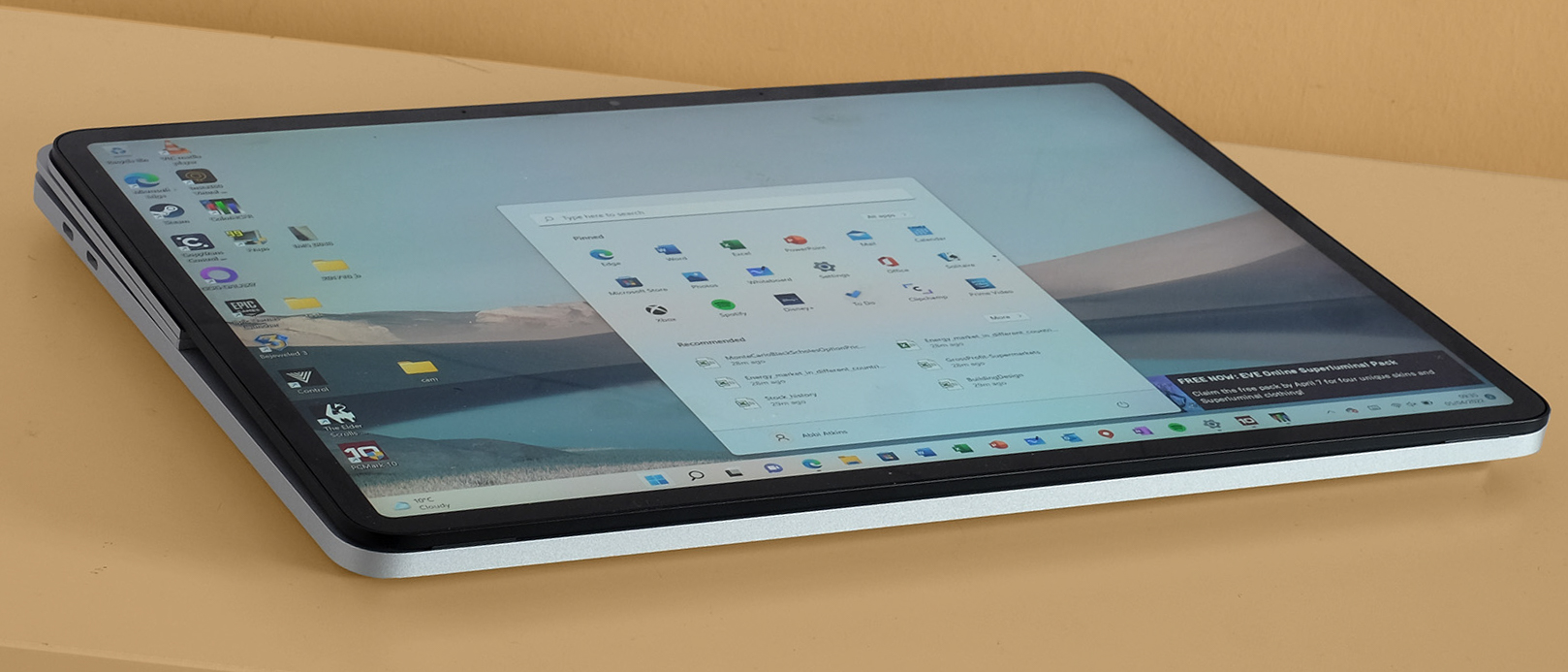Digital Camera World Verdict
The Microsoft Surface Laptop Studio takes the Surface laptop series into new ground, and aims to cater for the most demanding of users. Like other Surface computers it excludes quality throughout, including parts workstations tend to neglect, such as the speakers and webcam. However, the price ramps up significantly for the punchier variants and even these are not quite world-class performers.
Pros
- +
Sleek hybrid hinge design
- +
Quality keyboard and haptic touchpad
- +
Smartly designed, quiet cooling
Cons
- -
Display doesn’t cover 100% of DCI P3
- -
High-spec models are expensive
- -
Performance ceiling is not that high
Why you can trust Digital Camera World
The Microsoft Surface Laptop Studio is part of the most venerable line of tablet-laptop hybrids. This is a brand new design in the family, and is arguably the best fit of all for camera users who want a computer for their home or studio rather than to take out and about every day.
We say “camera users” rather simply photographers because the higher-end Microsoft Surface Laptop Studios have fairly punchy GPUs. These should appeal to videographers who want to speed up their workflow.
However, as with every Surface product, design is king.
The Microsoft Surface Laptop Studio is perhaps the slickest touchscreen laptop specifically aimed at designers and those in other creative fields. This world-class design does not come for free, and some disconnect between price and performance is required. And while great, the 14.4-inch 3:2 aspect display does not quite match that of the latest top-end MacBook Pro and iPad Pro 12.9 lines in important areas.
Microsoft Surface Laptop Studio: Specification
The Microsoft Surface Laptop Studio is more powerful than the other laptops in this series because it uses Intel’s H series processors. Big spenders have the option of an Nvidia RTX 3050 Ti graphics card too.
These Intel processors differ from the kind used in the average slim and light laptop in the juice, the power, they are able to draw. H-series chipsets are typically much better at sustained heavy workloads as a result. At this level, power is not limited so much by the size of your power brick, more the laptop’s ability to shift heat generated by the internals.
The Microsoft Surface Laptop Studio is a performance machine, but sits a good few rungs below a high-end gaming laptop or workstation. Microsoft has deliberately struck a balance between power and how pleasant the thing is to use each day.
There’s no such cap on the RAM and storage, though. While base models have a humble 256GB SSD and 16GB RAM, the highest-end specs have 32GB RAM and 2TB SSD storage. As is the case in other Microsoft Surface lines, these upgrades can seem painfully expensive when stacked up against the raw cost of the components. It’s one of the big issues for potential Microsoft Surface Laptop Studio buyers.
Surface Laptop Studio: key features
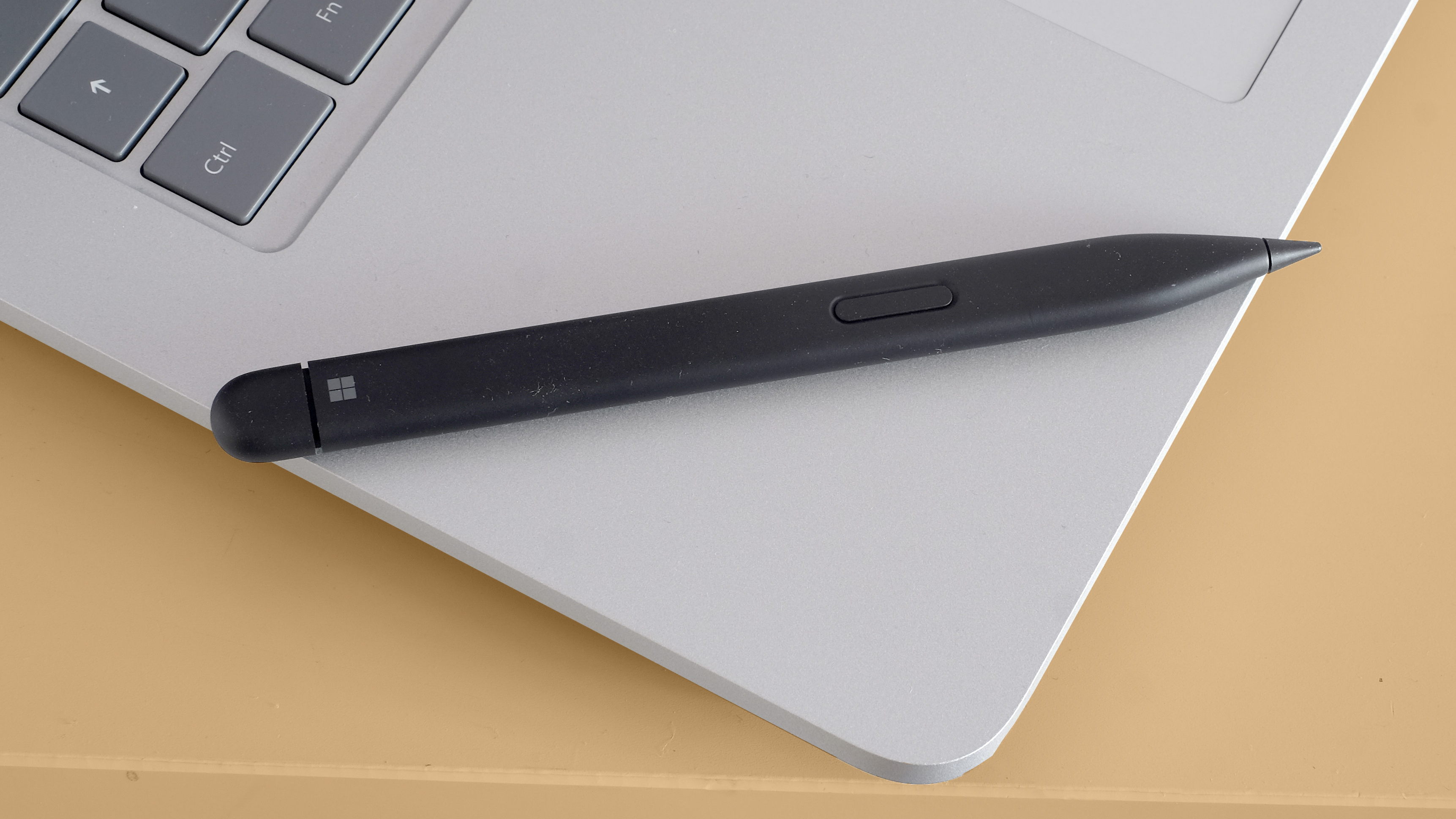
Aside from having significantly more power on tap than the relatively approachable Surface Pro 8, the key draws of the Microsoft Surface Laptop Studio relate to its hinge design, its display and stylus support.
The easiest way to make a hybrid laptop is to give it a 360-degree hinge. Microsoft is far too much of a hybrid veteran to opt for something so ordinary. The Microsoft Surface Laptop Studio has a dual hinge. It can open up like a normal laptop, but a secondary hinge around the centre of the display lets you pull the screen forwards so the bottom locks in place magnetically just above touchpad. Or it can sit flat where the lid would usually be.
This gets you the “fat tablet” style of a 360-degree hinge, without leaving the keyboard sitting awkwardly underneath. The entire laptop is designed around this style, and one of the most important elements is something you might not consider: cooling.
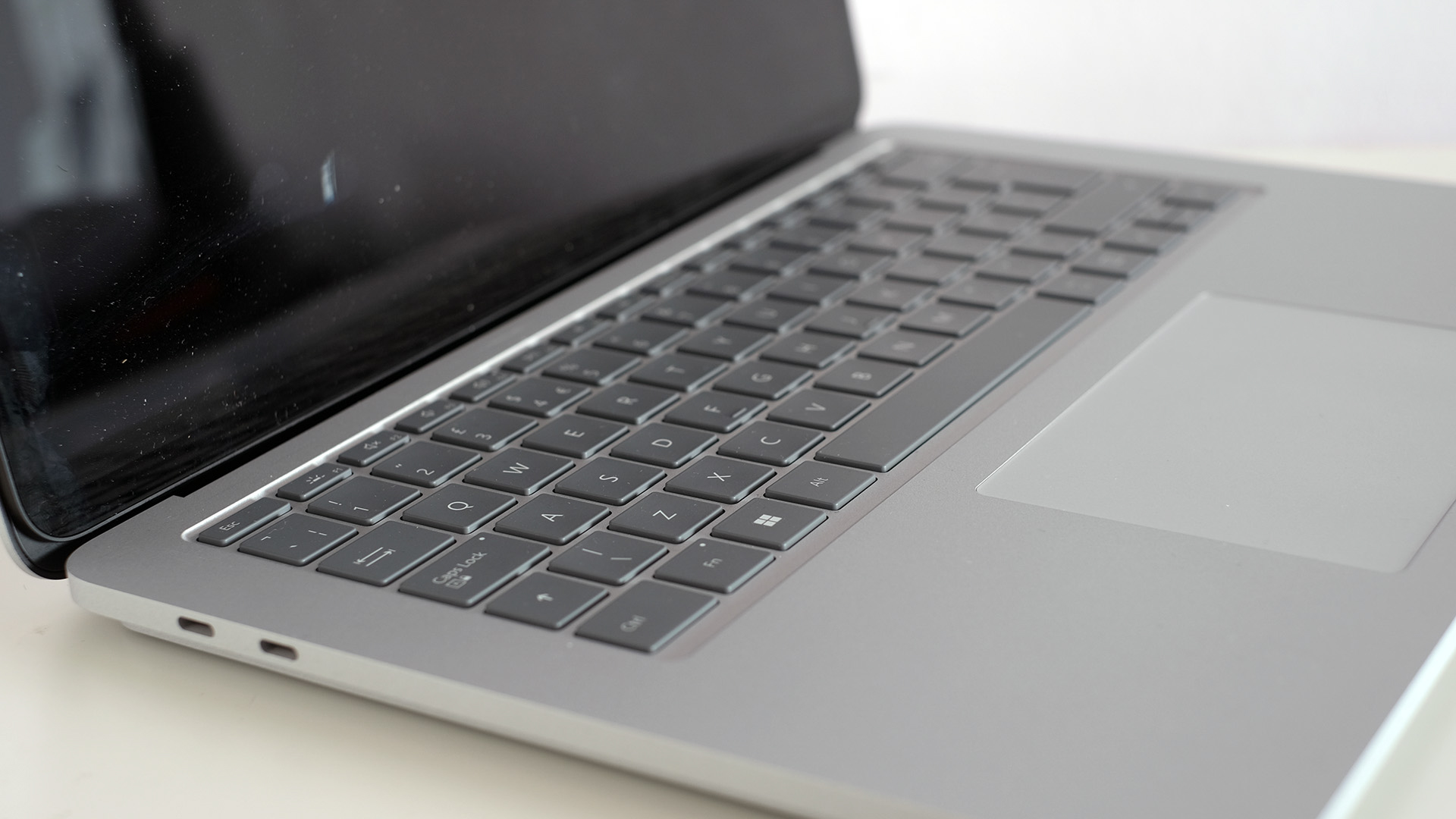
Long in/out air grilles sit on each side of the Microsoft Surface Laptop Studio in an alcove, making them almost impossible to accidentally block. It may sound boring, but it’s big. Blocking the bottom of the laptop does not impede performance.
The Microsoft Surface Laptop Studio’s display/hinge style also allows for a webcam far better than that of the average laptop, at any price. Its speakers are excellent too: loud, beefy and with a wide sound field. While there are holes to pick in Laptop Studio as a workstation-like laptop for professionals, it simply exudes a sense of quality that goes well beyond what you can appreciate on a spec sheet.
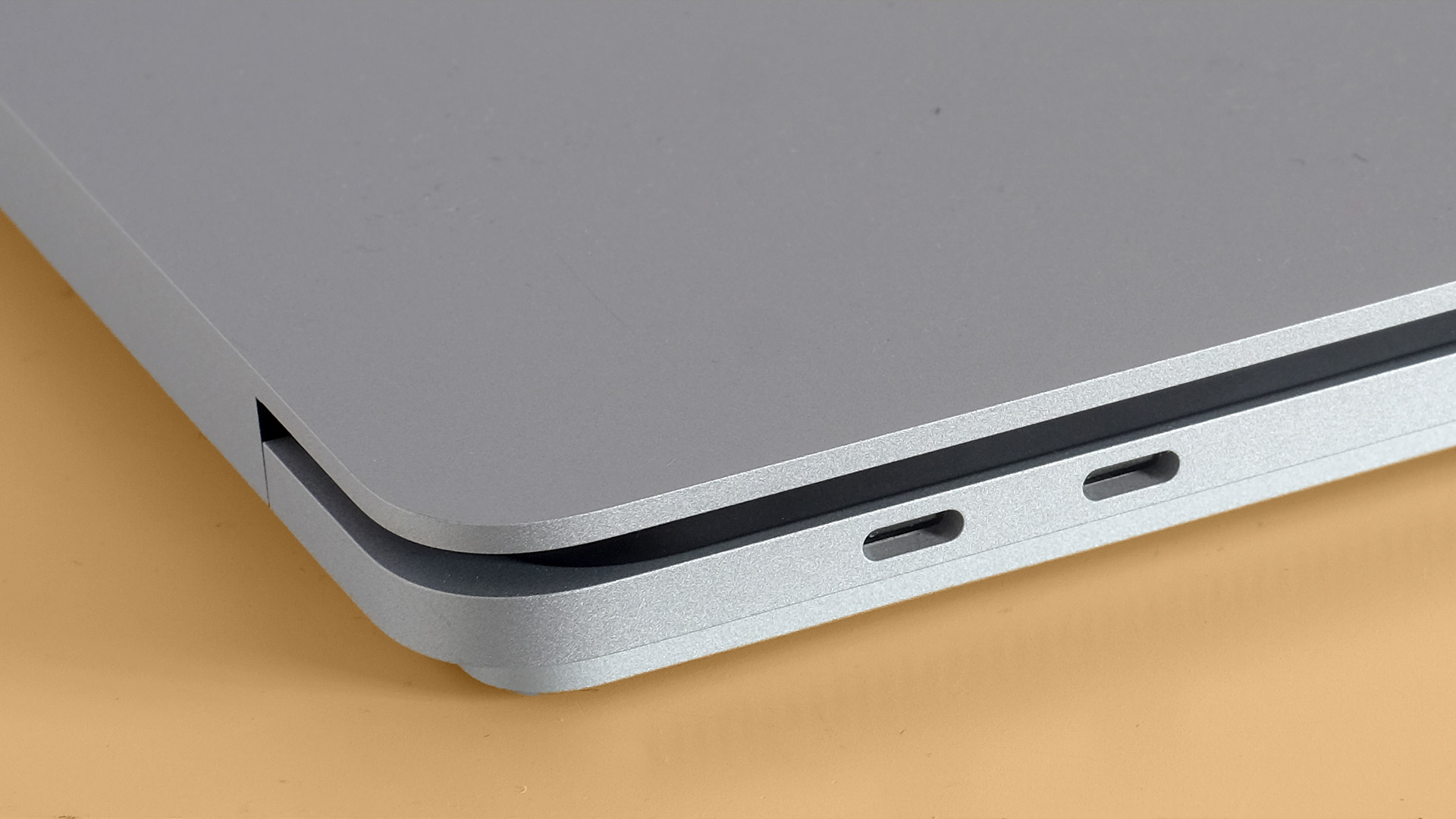
We’ll cover some of these holes in the performance section, but the connections will be an instant turn-off for some. The Microsoft Surface Laptop Studio has two Thunderbolt 4 USB-C ports. There’s no card slot and no USB-A sockets, which your older peripherals will almost certainly use.
Microsoft’s answer is a USB-C dock. But “pro” laptop of this size should really fit in more connections. Great USB-C docks do not come cheap either.
Surface Laptop Studio: build & handling
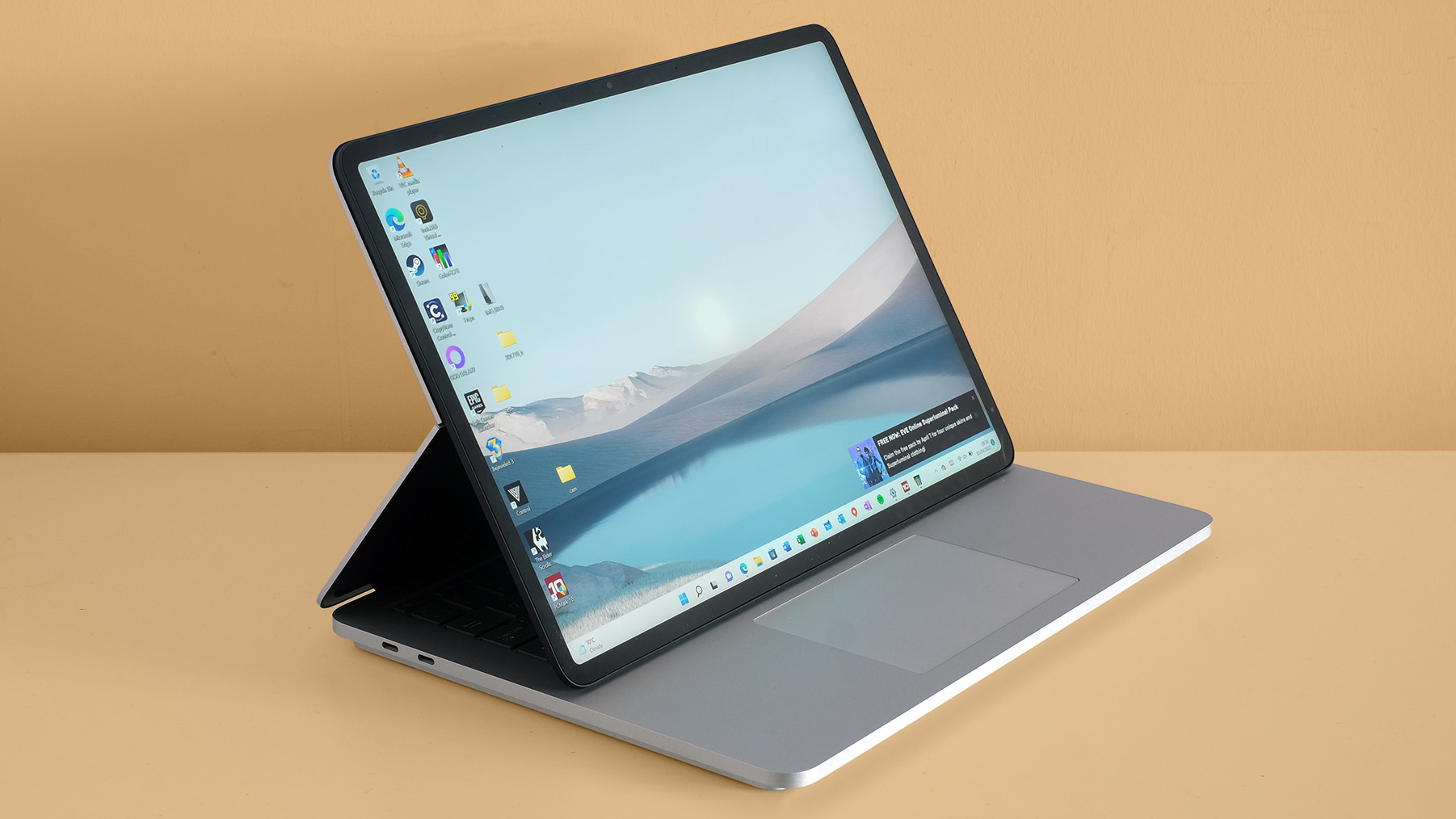
The Microsoft Surface Laptop Studio concept lives and dies by the quality of its hinge. It is no great surprise that Microsoft has largely nailed this part. The hinge’s articulation is smooth and confident, with zero of the bulkiness seen in comparable ranges like the still very good Acer ConceptD series.
And this wouldn’t be a true Surface computer without almost excessive use of magnesium alloy. The entire casing uses this metal, which is light and strong but does not have the same cool metallic feel as the aluminum used in Apple’s MacBooks. You can’t fail to notice it if your current computer has an aluminum shell, but it still feels expensive and there’s zero noticeable flex to the Microsoft Surface Laptop Studio’s casing.
This focus on rigidity, and the decision not to rely on ultra-low-voltage processors, is likely why the Microsoft Surface Laptop Studio is not super-light. It weighs 1.8kg. We’d class that as fine to move around occasionally, but not ideal if you want a laptop to carry around in a bag every day.
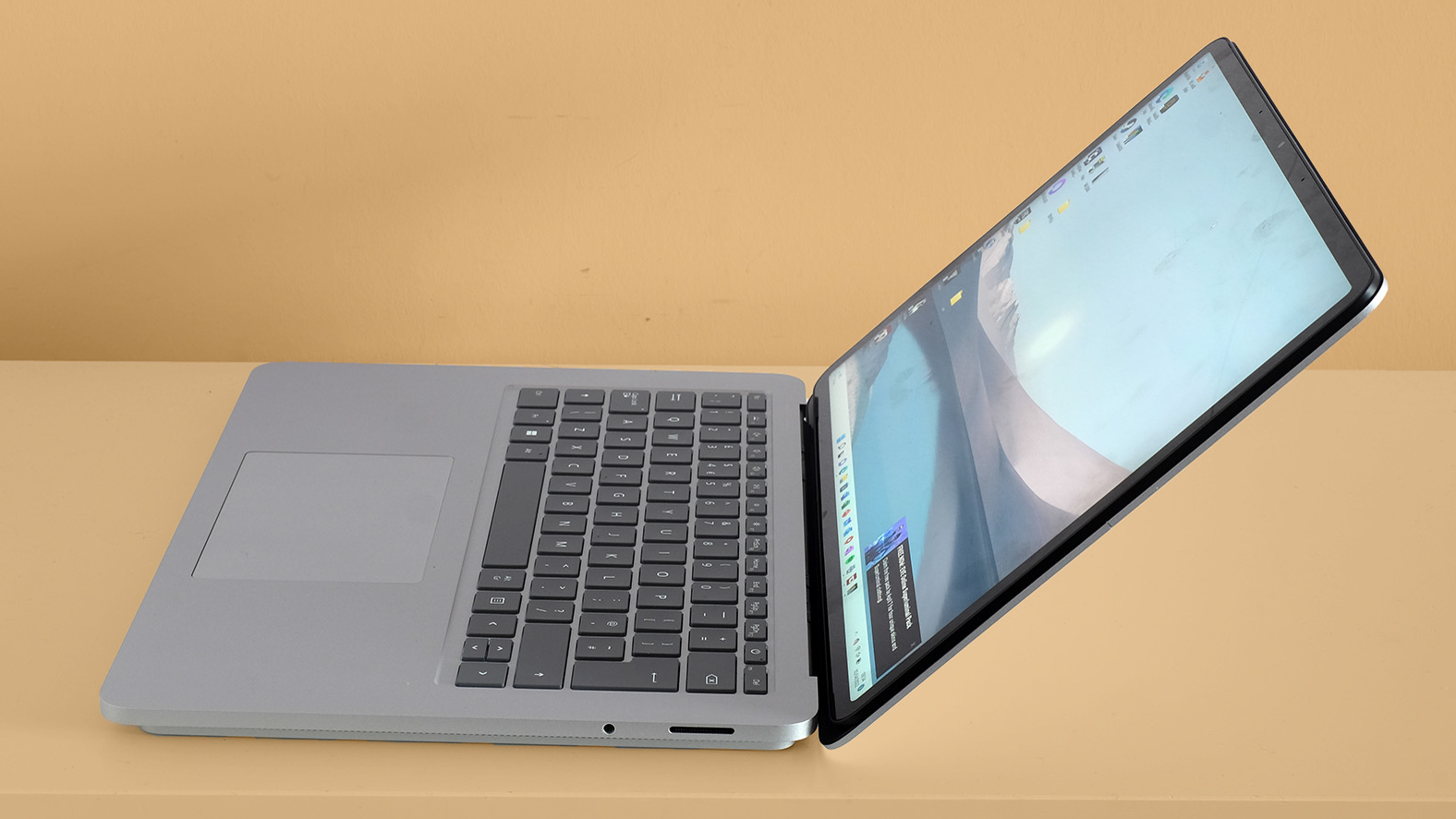
You should also take on board what the Microsoft Surface Laptop Studio hinge system is not designed to do. It does not hold the display in mid-air, and does not lock in place at the ideal, slightly sloped, angle for comfortable stylus use. The screen sits near-upright in its pulled-forwards position, so if you like to edit photos or do design work with a stylus, you’ll probably use it with the display fully flat.
Acer’s ConceptD hinge system may be less elegant but it is arguably more functionally versatile, as it is able to hold the screen confidently in more positions.
The Microsoft Surface Laptop Studio keyboard and trackpad are both great. Key travel is slightly shallow but the key quality and actuation feedback are excellent. The touchpad is a smooth pane of textured glass and, unlike other members of the Surface family, it uses a haptic motor for the clicker rather than a mechanical system.
Click feel is less substantial than Microsoft’s best but the haptics allow for a consistent response across the entire surface.
Performance & benchmark results
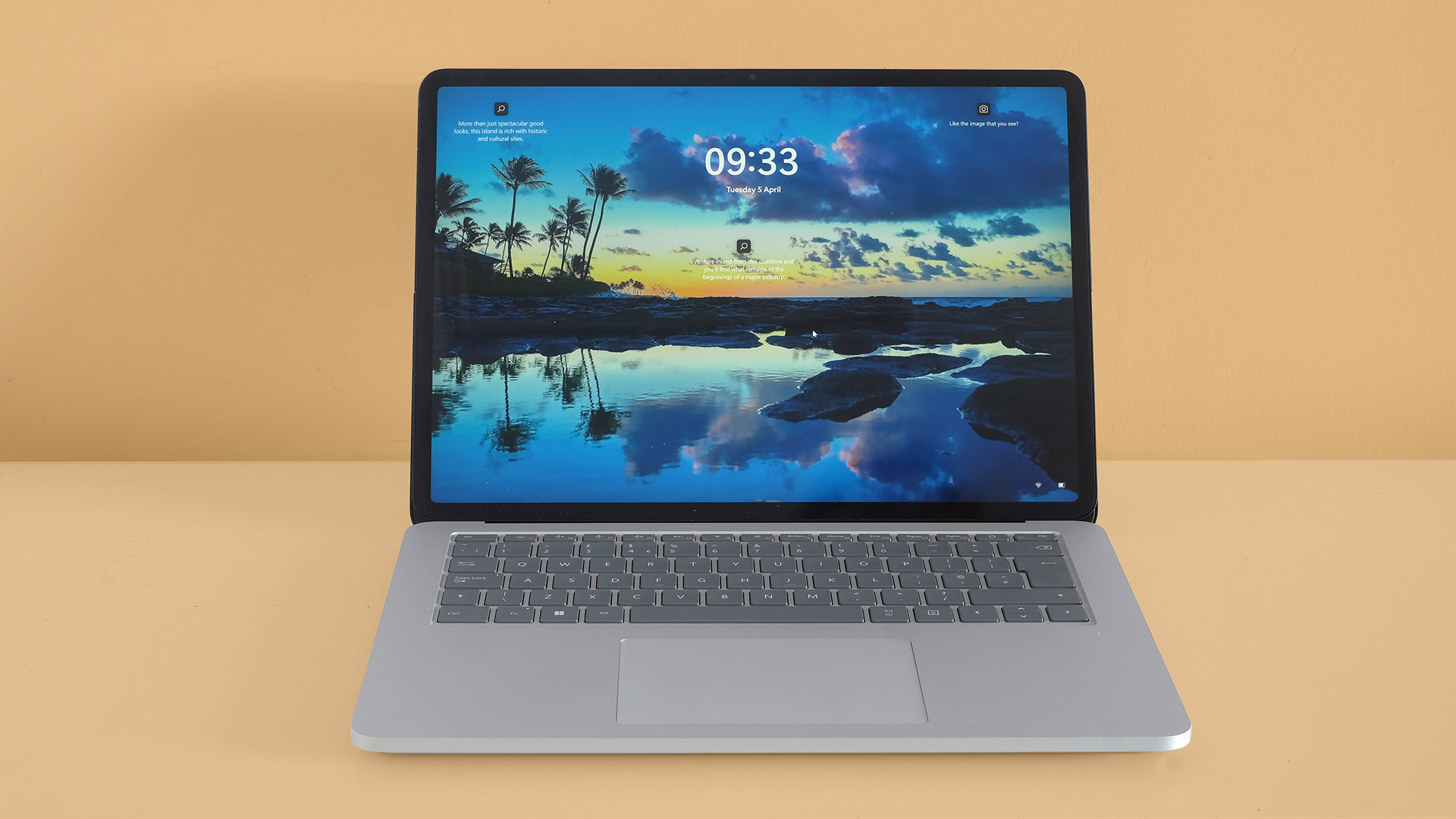
Before we get into any criticism of the Microsoft Surface Laptop Studio’s performance, let’s set the context. All versions of the laptop have enough power for most photographers.
We have the model with an Intel Core i7 processor, 16GB RAM, a 1TB SSD and an Nvidia RTX 3050 Ti graphics card. This is a higher-end model. For editing images in Photoshop, the base Microsoft Surface Laptop Studio with no separate graphics card will perform perfectly well.
These lower-end versions are probably the best buys, as you get all the benefits of Microsoft’s great design, without having to offset them against the off-putting costs ladled on by Microsoft’s pricey spec upgrades. Companies like Acer, Lenovo and Asus typically price their upgrades very fairly, even generously. Microsoft and Apple attempt to leverage the unique properties of their computer designs, and high-end versions can be intimidatingly expensive.
As such, the Surface Laptop Studio is business as usual for Microsoft. However, in this laptop in particular there is a slight clash between how the Surface Laptop Studio is marketed, and the components it uses.
We reviewed the version with the Core i7-11370H processor here. It’s a quad-core chipset, with eight threads, where the popular i7-11800H has eight cores. At the time of review we are even starting to see Intel 12th Gen laptops, which have up to 14 cores.
For a workstation style laptop the Microsoft Surface Laptop Studio is not actually that powerful. Camera users who shoot and edit a lot of video can make good use of these additional cores, seen in other laptops, to bring down rendering times.
You’ll see the same situation play out in the top-end versions with discrete graphics cards. The high-end “consumer” Microsoft Surface Laptop Studio has an Nvidia RTX 3050 Ti, a card used in entry-level gaming laptops.
Paying perhaps $2,000/£2,000 for a workstation laptop that has far from the best available, or even the latest, hardware may well sting. Our Microsoft Surface Laptop Studio scores 4547 in PC Mark 10, far off the ~7700 achieved by the Razer Blade 15 and its Intel i7-12800H processor. Geekbench scores are even further separated, ranging from 4548-5300 in test runs, where the latest high-powered 12th Gen i7 can achieve upwards of 12000.
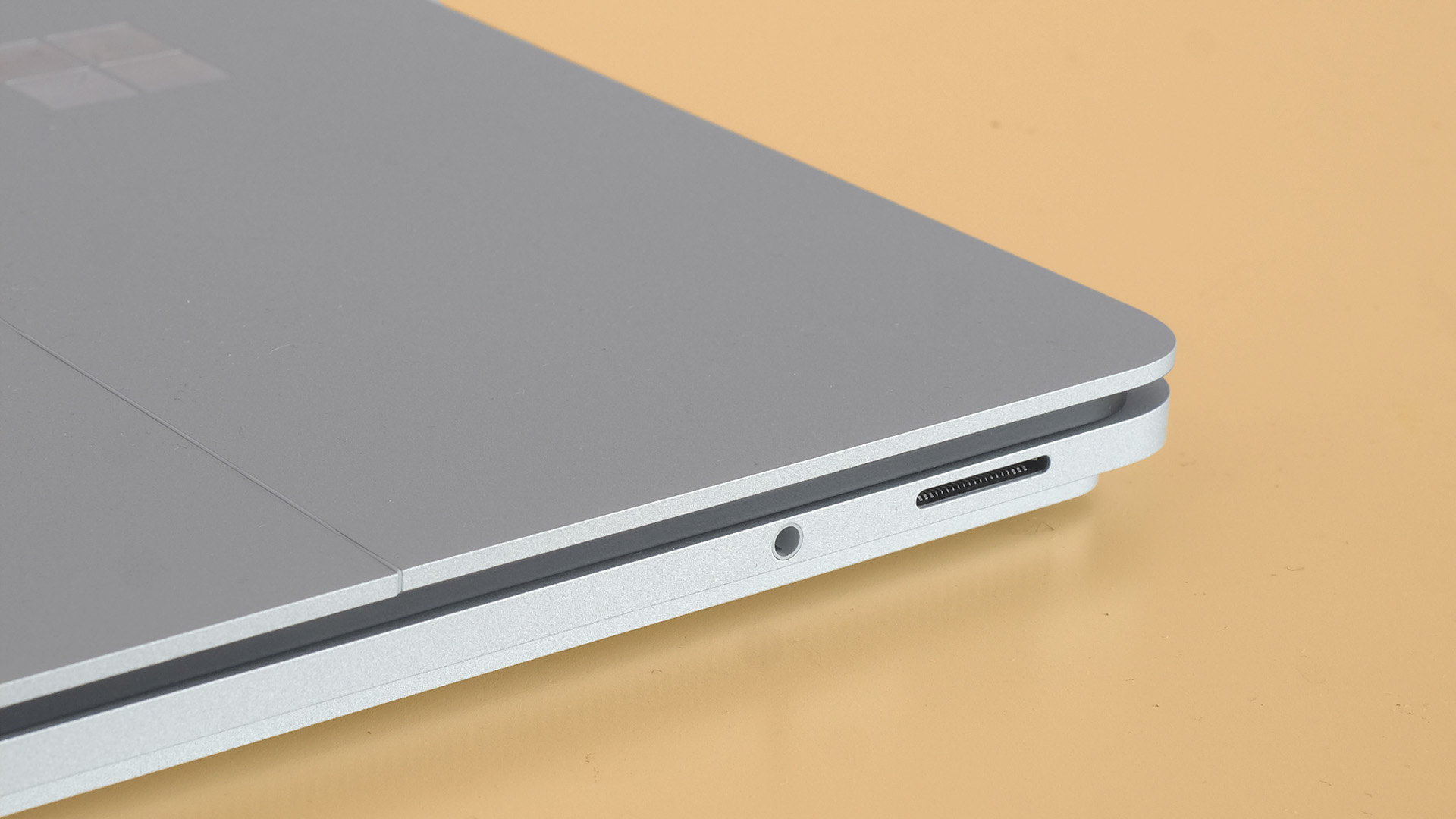
It is a reminder the Microsoft Surface Laptop Studio is as much a lifestyle laptop as a workstation. In return you get a lovely quiet cooling system that continues to generate little noise after significant periods of stress. But that may not cut it for some of you.
There are even similar compromises in the display. We have loved using the Microsoft Surface Laptop Studio and think that, to the naked eye, this screen looks excellent. Its 500-nit maximum brightness is a good 25% higher than that of a top-quality LCD competitor, for example.
However, it “only” fulfils 89% of the DCI color gamut, a way behind the 99% coverage of the latest MacBook Pros. Apple’s miniLED MacBook screens also have far higher maximum brightness, with peaks of up to 1600 nits — wonderful stuff for mastering HDR video.
Few people necessarily need full DCI P3 color coverage or true HDR-grade brightness. We wouldn’t have been able to tell the color limitations here without using a colorimeter tool. But as with the solid but far from class-leading raw performance, these are aspects pro users out there should take into account.
Microsoft Surface Laptop Studio: Verdict
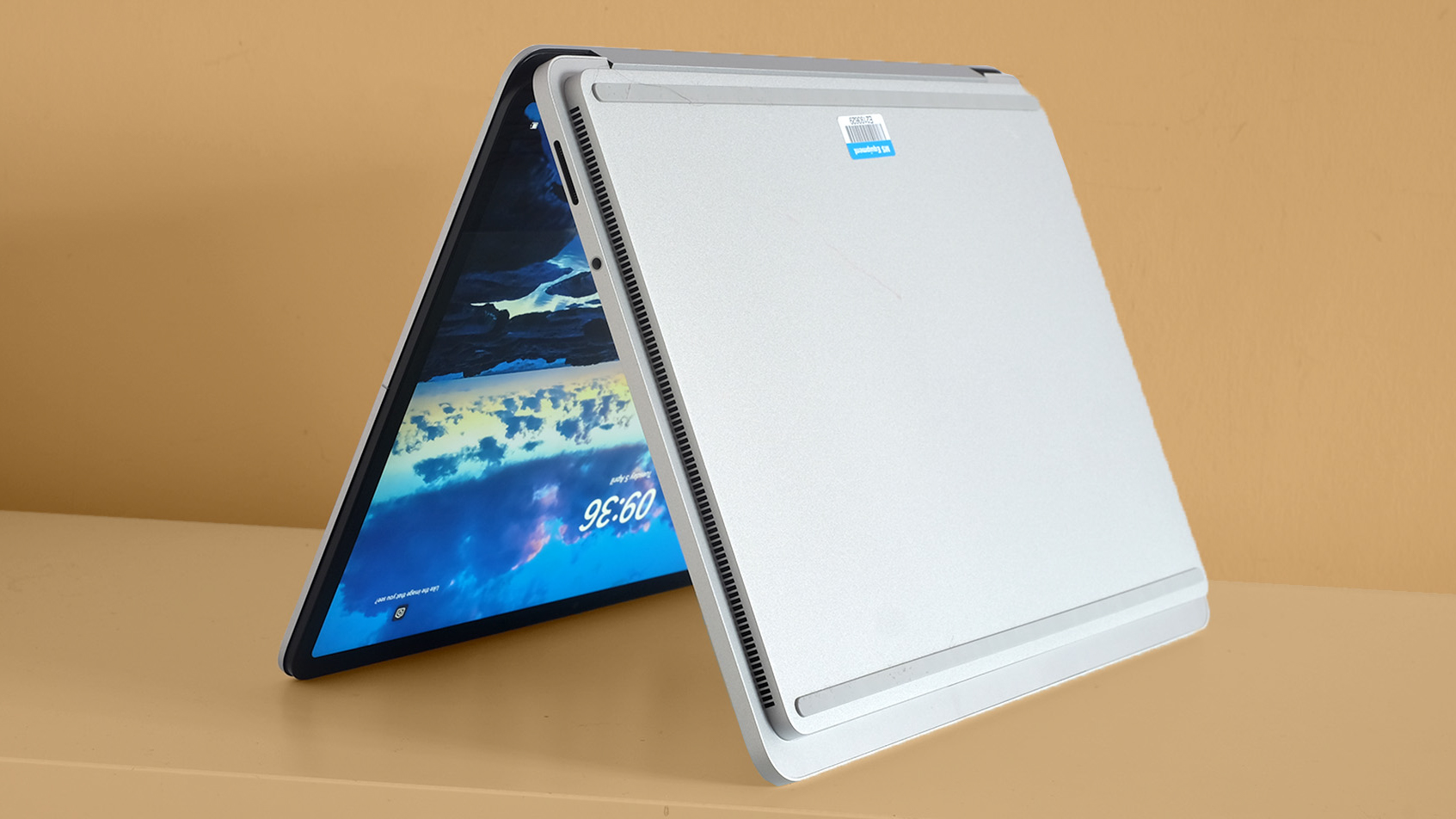
The Microsoft Surface Laptop Studio is a slick hybrid laptop, and the most powerful in the series to date. It shows off a new style of hinge that should appeal to photographers and designers.
A great display, a clever cooling system, good stylus support and more performance driven processors than those seen in other Surface laptops lead to an unusually versatile computer — one that can do things a MacBook Pro simply can’t.
However, the Microsoft Surface Laptop Studio gets more difficult to love the further you head into its top-end specs thanks to pricey upgrades and a fairly low ceiling on its performance for what is sold as — to some at least — a pro-grade workstation.
Read more
• Best student laptops
• Best Chromebooks
• Best Ultrabooks
• Best photo editing laptops
• Best laptops for video editing
• Best desktop computers
• Best Mac printer
• Best external hard drives
• Best monitors for photo editing
• Best USB-C hubs
Andrew is a freelance technology writer specializing in mobile phones. You can find his articles on Wired, Techradar, Digital Spy, Mashable, Stuff and, of course, Digital Camera World.
